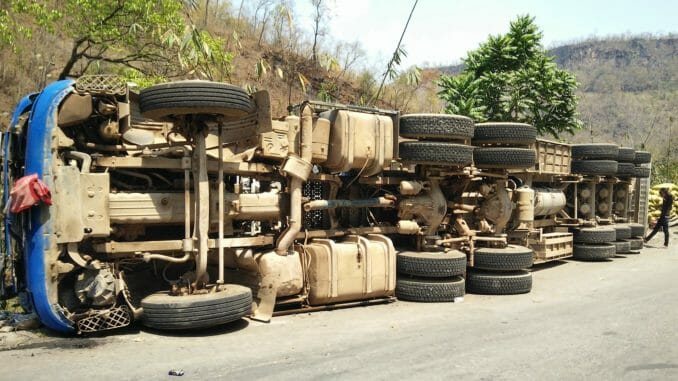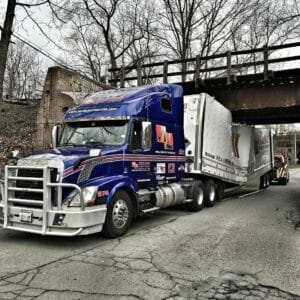
Getting into a trucking accident is perhaps one of the scariest things for any truck driver, especially if the collision was more than just a minor bumper tap. The following suggestions can help avoid liability and other issues.
Having more than just a pen and paper available will help you take better records of the accident. An accident report kit has everything you need in one place and should contain the following:
- Safety vest
- A written report form to help document the incident
- A diagram template to draw out the scene
- Witness cards
- Writing utensils
- Camera
At The Scene
- Take a second to recollect yourself and remain calm.
- Call 911. Use the nearest mile marker to give the most accurate location possible. If cell services are not available, secure the scene first and send people for help in multiple directions if possible. Of course, never send someone who is injured or in shock.
- Do NOT move the vehicle from the crash site unless instructed by authorities or highway signs. Remember that prosecutors will grasp at every little thing to put you at fault. It’s not worth trying to do something that may be questionable. Moving the vehicle after the incident may appear as an attempt at fleeing, for instance. Think first, act second.
- Secure the scene. If you intend to stop for more than 10 minutes, which should always be the case in an accident, you must put reflectors out immediately.
On a two-way highway, one reflector is to be placed 100 feet in front of the vehicle, one 10 feet behind the vehicle, and the last 100 feet behind. On a one way or divided highway, one triangle is to be placed 10 feet behind the truck, the second 100 feet behind the truck, and the last 200 feet behind the truck. Within 500 feet of a hill, curve, or obstruction, a reflector should be placed 100 to 500 feet from the vehicle in the direction of the obstruction. The other two will depend on if you are on a one way/divided or a two-way road, so follow the guidelines for that. The average stride length is about 2.5 feet for a man and 2.2 feet for a woman.
- Inform your company. Immediately let your company know what happened. Try to be as objective as possible and remain calm: they will help you take care of everything. Once you’ve fully documented the accident, send it all to your dispatcher or whoever is taking care of you on the company side. Use a scanning app, such as CamScanner, to take photos of paper forms and instantly convert them to PDF or just send pictures of the forms if it’s easier for you.
- Get witness information. Record names, addresses, insurance card info (just snap a picture), license plates, and contact information from all witnesses. Keep in mind that spending too much time with a witness can be seen by prosecutors as an attempt at coercion.
- Take lots of photos from all angles possible. This will prove very useful for you, especially if the incident was not your fault.
- Wait for the authorities to arrive. Stay calm and move everyone to a safe place, behind a barrier, or off the road entirely. Try to be as collected and objective as possible when you talk to the authorities.
After the Incident
The police and insurance companies will determine who was at fault. It may be one-sided or both drivers might be at fault, in which case a percentage of the blame is assigned to each party.

You might receive tickets if at fault, and the severity as well as frequency of the violation may result in your license being suspended or revoked. Remember that fines and points are stricter for CDL holders than for regular drivers.
You will most likely be subject to alcohol and drug testing by your company to determine if you were under the influence at the time of the accident, even if you were not at fault.
If the results show you were under the influence of alcohol or drugs, you may be fired immediately, and your company may press charges against you for the damage you caused.
If the test comes back clean, what happens next depends on the severity of the accident and the amount of damage caused.
If the accident is minor, you’ll keep your job unless you’ve had many accidents before. If the accident resulted in losing your license, however, you will be most likely be out of a job. Being under the influence, vehicular manslaughter, and fleeing the scene are all first-class tickets to having your license revoked and facing serious charges to include jail time.
Stay honest throughout the accident investigation process to demonstrate to your company that you have integrity. Truckers with a history of safe driving are not likely to get terminated, but a fatal accident can end a career in an instant.
At the end of the day, it is always the professional driver’s job to practice safe driving habits and refrain from substance abuse. It can be the difference between making a paycheck and jail time.
